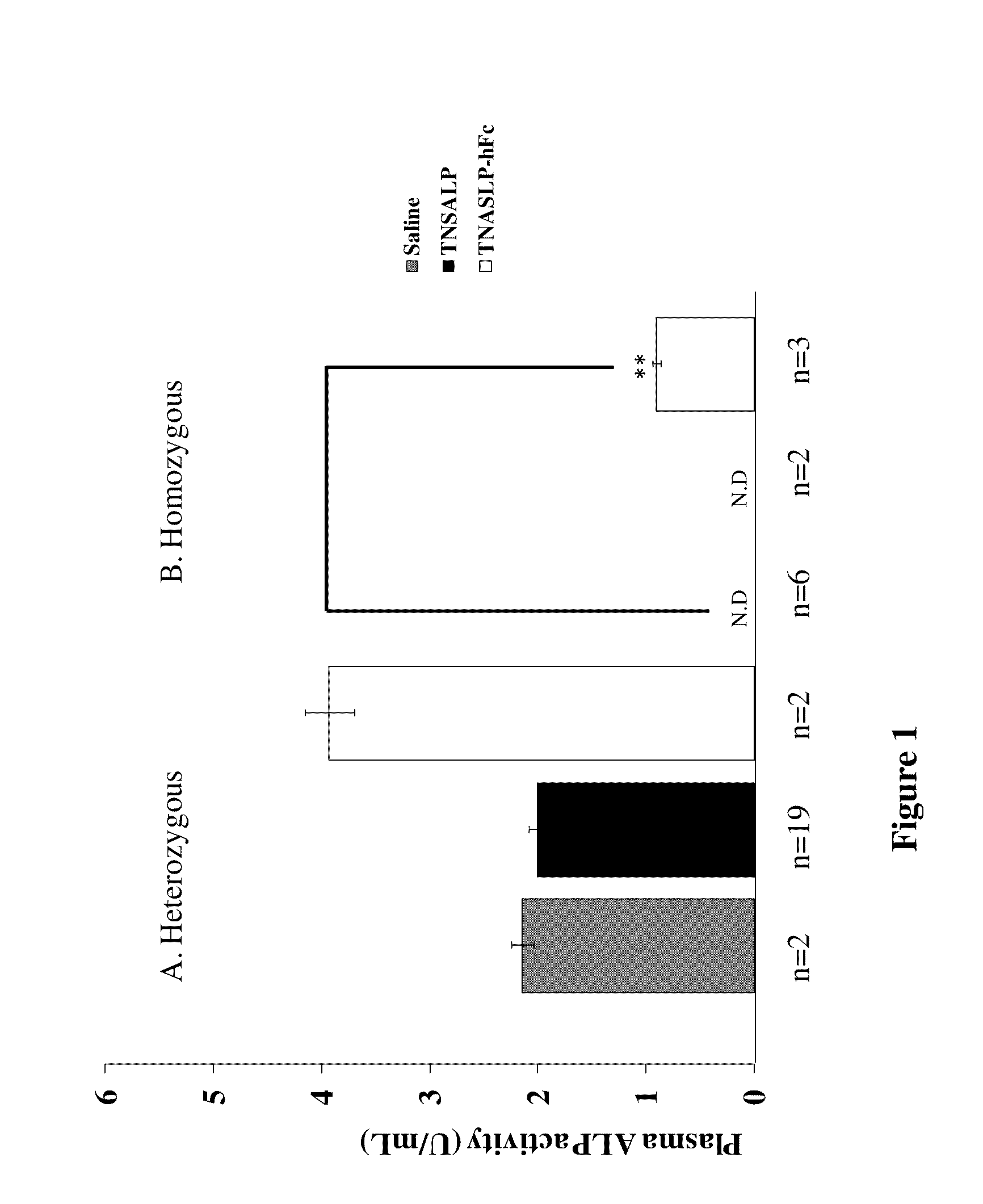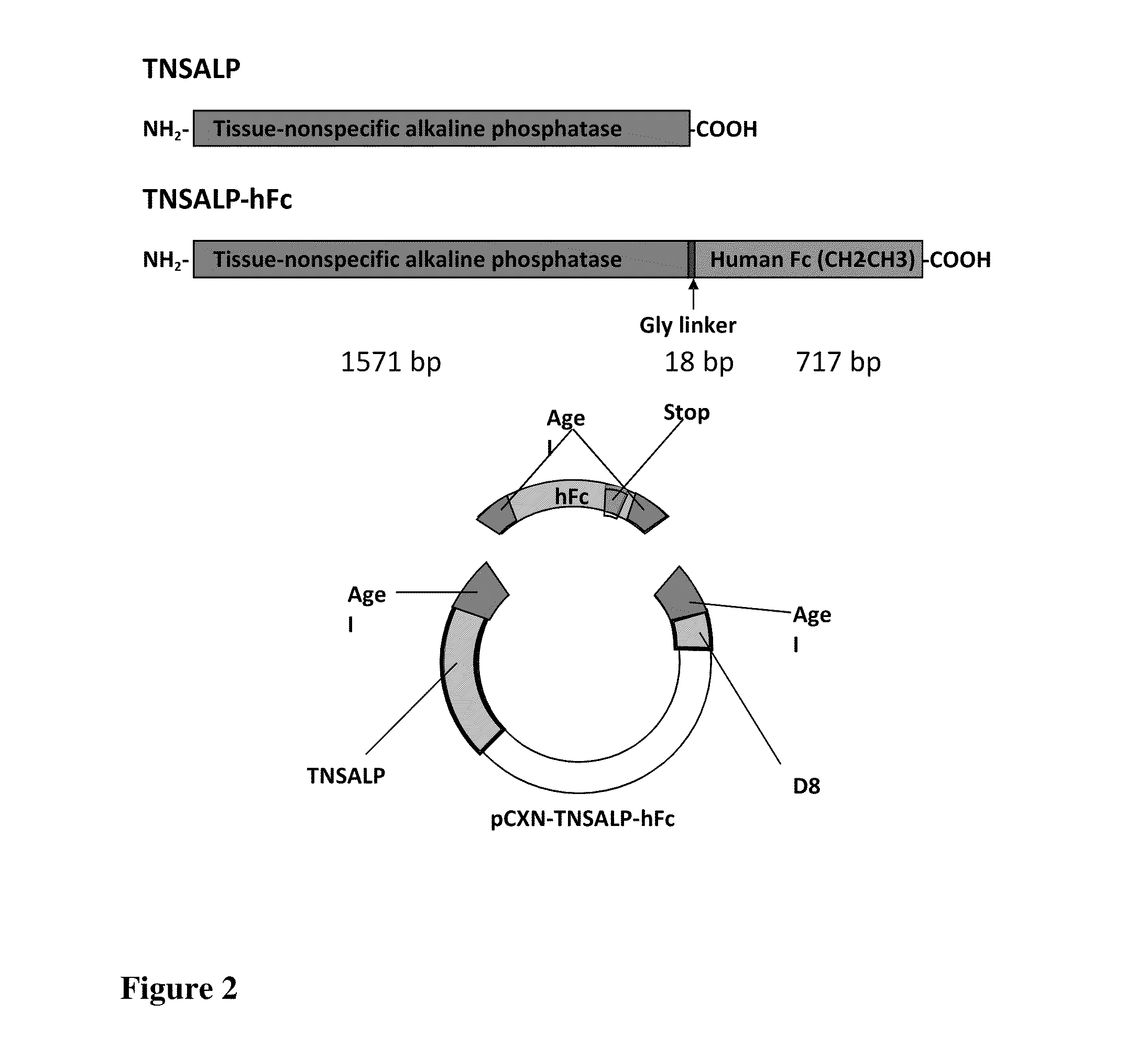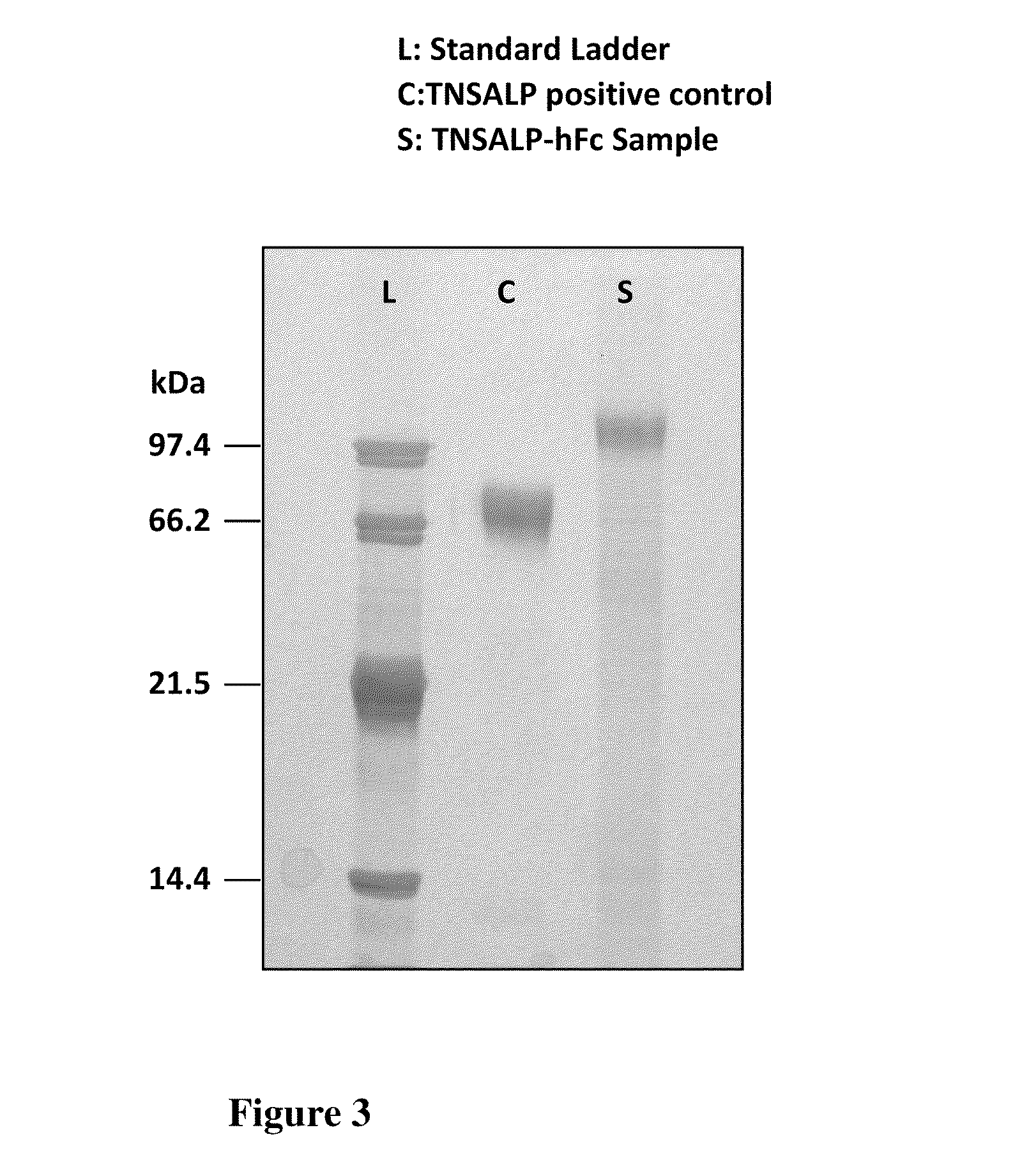Prenatal enzyme replacement therapy
a technology of enzyme replacement and prenatal therapy, which is applied in the direction of antibody medical ingredients, peptide/protein ingredients, and metabolic disorders, etc., can solve the problems of inability to meet prenatal therapy for inborn metabolism errors, stillbirth or postnatal lethality, and neonates often succumb to respiratory failur
- Summary
- Abstract
- Description
- Claims
- Application Information
AI Technical Summary
Benefits of technology
Problems solved by technology
Method used
Image
Examples
Embodiment Construction
[0019]Applicants discovered that the prenatal delivery of a fusion protein containing the IgG Fc-domain, which after infusion into the maternal circulation, mediates delivery of the fusion protein across the placenta into the circulation of the fetus or embryo. An embryo is often described in the human context as existing from conception to about the eighth week, whereas a fetus is often described as being from about nine weeks to birth. Specifically, the present invention contemplates a fusion protein having an IgG1 Fc peptide portion peptide bonded to a water-soluble (cytosol-soluble) portion of a biologically active polypeptide that is normally membrane-bound such as tissue-nonspecific alkaline phosphatase (TNSALP) or HMG-CoA reductase. The present invention also contemplates a composition containing an effective amount of the fusion protein dissolved or dispersed in a pharmaceutically acceptable carrier. A method of treating a deficiency of that biologically active polypeptide i...
PUM
| Property | Measurement | Unit |
|---|---|---|
| Solubility (mass) | aaaaa | aaaaa |
| Alkalinity | aaaaa | aaaaa |
Abstract
Description
Claims
Application Information
 Login to View More
Login to View More - R&D
- Intellectual Property
- Life Sciences
- Materials
- Tech Scout
- Unparalleled Data Quality
- Higher Quality Content
- 60% Fewer Hallucinations
Browse by: Latest US Patents, China's latest patents, Technical Efficacy Thesaurus, Application Domain, Technology Topic, Popular Technical Reports.
© 2025 PatSnap. All rights reserved.Legal|Privacy policy|Modern Slavery Act Transparency Statement|Sitemap|About US| Contact US: help@patsnap.com



